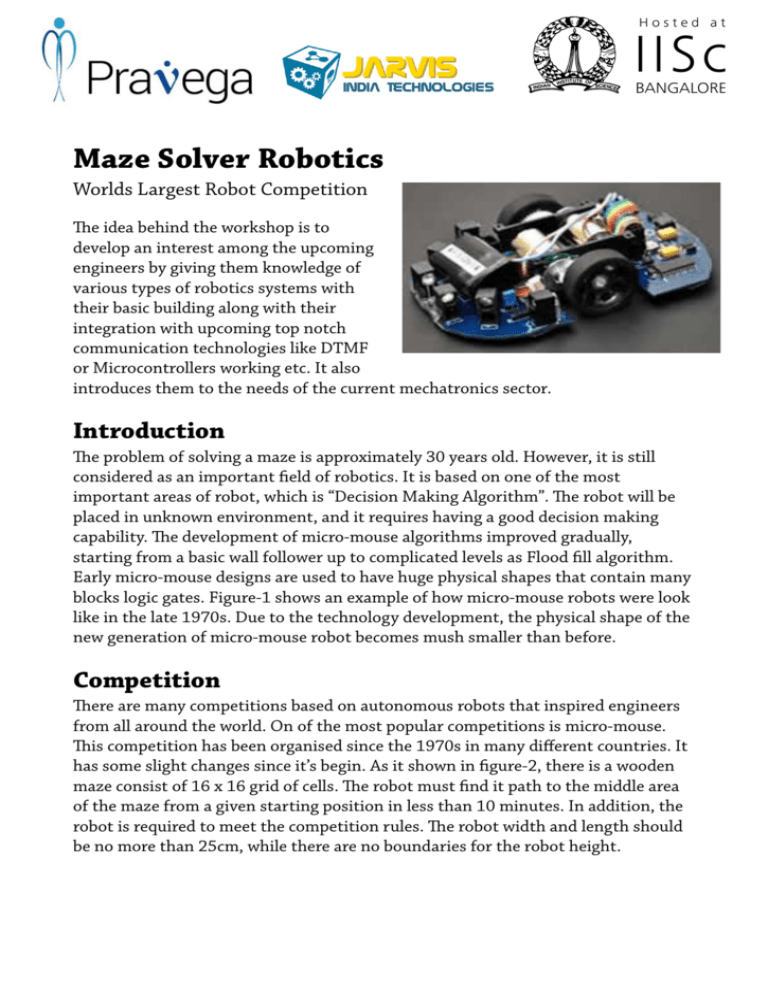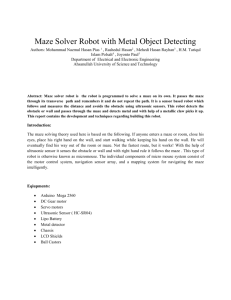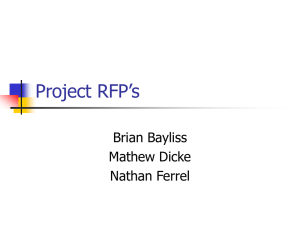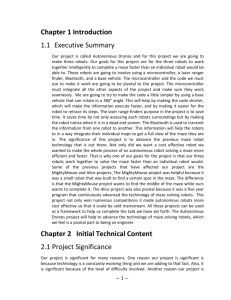Pdf Link
advertisement

Maze Solver Robotics Worlds Largest Robot Competition The idea behind the workshop is to develop an interest among the upcoming engineers by giving them knowledge of various types of robotics systems with their basic building along with their integration with upcoming top notch communication technologies like DTMF or Microcontrollers working etc. It also introduces them to the needs of the current mechatronics sector. Introduction The problem of solving a maze is approximately 30 years old. However, it is still considered as an important field of robotics. It is based on one of the most important areas of robot, which is “Decision Making Algorithm”. The robot will be placed in unknown environment, and it requires having a good decision making capability. The development of micro-mouse algorithms improved gradually, starting from a basic wall follower up to complicated levels as Flood fill algorithm. Early micro-mouse designs are used to have huge physical shapes that contain many blocks logic gates. Figure-1 shows an example of how micro-mouse robots were look like in the late 1970s. Due to the technology development, the physical shape of the new generation of micro-mouse robot becomes mush smaller than before. Competition There are many competitions based on autonomous robots that inspired engineers from all around the world. On of the most popular competitions is micro-mouse. This competition has been organised since the 1970s in many different countries. It has some slight changes since it’s begin. As it shown in figure-2, there is a wooden maze consist of 16 x 16 grid of cells. The robot must find it path to the middle area of the maze from a given starting position in less than 10 minutes. In addition, the robot is required to meet the competition rules. The robot width and length should be no more than 25cm, while there are no boundaries for the robot height. KIT Images: Content Outline: Old generation of micro-mouse robots Micro-mouse competition Fill flood algorithm using one-dimensional arrays An example of a PWM of 25% duty cycle H-bridge with four switches Acceptable H-bridge states Shoot-through H-bridge states RPR220 reflective sensor IR reflective sensor construction and operation IR remote control handset. TSOP34840 IR receivers module Block diagram of TSOP34840 Receiving the transmitted IR Pulses Robo Jr chassis Serial monitor Fritzing software Simulation results block diagram Scanning routine in the multi dimensional array Left hand wall flow chart Filling the maze with destination values Fill flood flow chart Updating the cell value Block diagram for the maze solving robot Circuit diagram for the maze solving robot Maze solving robot physical configuration Mazes for testing simulations programme The robot on a 3 x 3 maze. Simulation results for maze 1. Simulation results for maze 2. Simulation results for the real maze Difficulties on solving the maze. Finding the shorten path application of robots on cars factories Wheel encoding technique Solution for wall following algorithm










